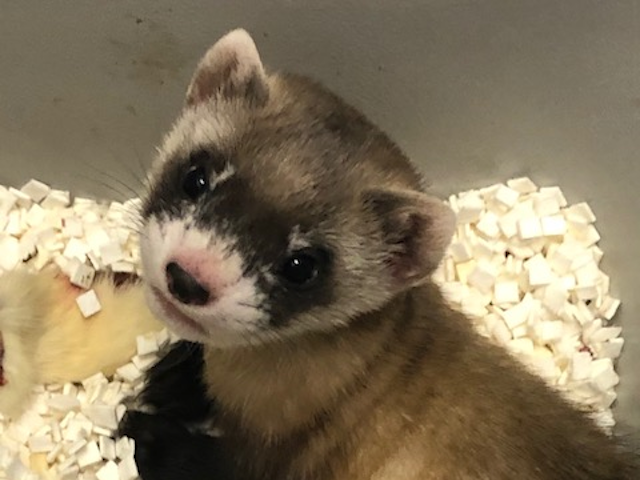Scientists announced they successfully cloned the first North American endangered species at a Fort Collins, Colorado, facility on Thursday.
“Elizabeth Ann” is the first of a new generation of black-footed ferrets, born with the genes of a ferret named “Willa,” who died over 30 years ago, in 1988. At the time, the Wyoming Game & Fish Department froze Willa’s DNA. The tissue samples were transferred to San Diego Zoo Global’s “Frozen Zoo” in 1988. Now, decades after her death, her genetic offspring is alive in Colorado.
Alongside the announcement, the U.S. Fish and Wildlife Service tweeted pictures of the new arrival and her domestic ferret surrogate mother.
Cutting-edge science and a blast from the past! Meet Elizabeth Ann. She’s the first-ever cloned black-footed ferret, created from the frozen cells of a ferret that died more than 30 years ago: https://t.co/PJNo7NaFhV
Check the thread for more about Elizabeth Anne! pic.twitter.com/0i85mv9FgH
— US Fish and Wildlife (@USFWSMtnPrairie) February 18, 2021
Additional footage of the lovely Elizabeth Anne. 🙂 pic.twitter.com/fz7HnwyI1F
— US Fish and Wildlife (@USFWSMtnPrairie) February 18, 2021
Elizabeth Anne is the product of a partnership between the Fish and Wildlife Service and Texas-based Viagen, a company that clones deceased pets. They also worked in cooperation with Revive & Restore, a wildlife conservation organization based in Sausalito, California, focused on the use of biotechnology to save species in danger of becoming extinct.
“Conservation needs more tools in the toolbox. That’s our whole motivation,” Revive & Restore co-founder and executive director Ryan Phelan said. “Cloning is just one of the tools.”
Despite this victory, many challenges remain. The largest issue is population size. With so few black-footed ferrets remaining, inbreeding is a major concern. A lack of genetic diversity opens the door to a host of birth defects, as well as vulnerabilities to parasites and disease.
Black-footed ferrets — distinct in their raccoon-like “bandit” markings — have been on the verge of extinction for decades. In fact, the species was thought to have already been lost before a sheepdog named “Shep” turned up with a dead one in 1981. The remaining number were quickly rescued, and work to renew their population has continued ever since. The Smithsonian estimates that 300-400 black-footed ferrets remain in the wild.
The baby ferret will be raised at the same Fish and Wildlife Service black-footed ferret breeding facility in which she was born, but is not domesticated like her surrogate mother. “You might have been handling a black-footed ferret kit and then they try to take your finger off the next day,” U.S. Fish and Wildlife Service black-footed ferret recovery coordinator Pete Gober said. “She’s holding her own.”

COMMENTS
Please let us know if you're having issues with commenting.